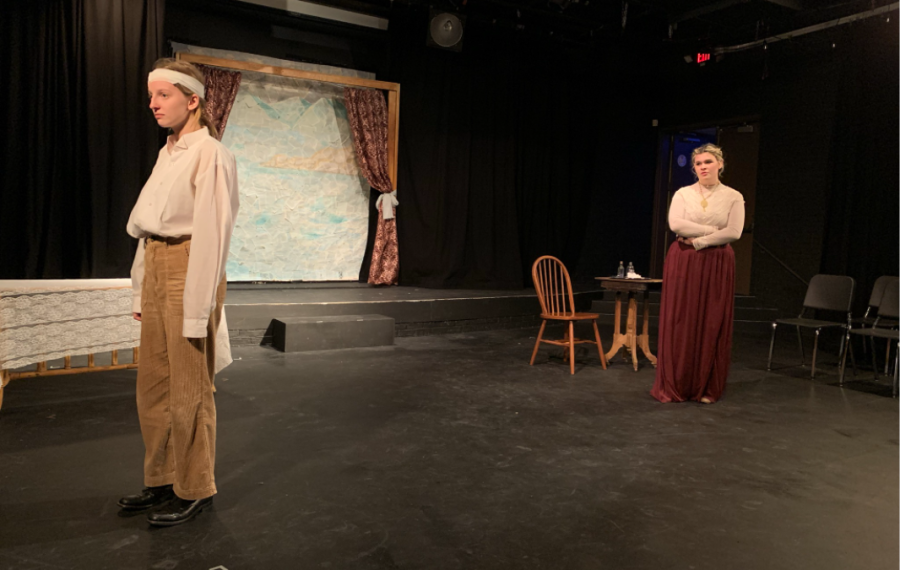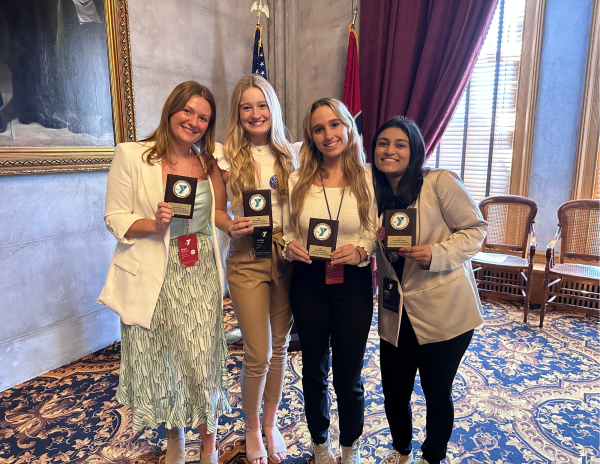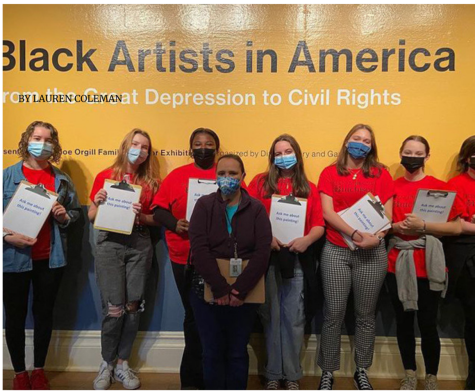The Seagull
Sara Kate Burnett and Claire Klemis acting in The Seagull
Art and Mental Health coincide. Sara Kate Burnett (‘22) and Ann Grimes (‘22) held a performance of their senior project The Seagull, a dramatic comedy about unrequited love and the authenticity of art met with fame, last month in the Theater Lab. This play has a seldom ending but Burnett and Grimes both agree that the final line does not define the play.
“Without the climax of Konstantin’s death by suicide, there would be no show,” Grimes says. “But the show is not about suicide, it contains suicide but is not about it.” In the end, The Seagull does not have a mental health moral, but they both hope it elicits conversations about mental health and the stigma around it. Burnett clearly states their decision was not revolutionary in any way, and that she hoped it would “make mental health less of a topic to tiptoe around.”
Because of the difficult subject matter, The Seagull was not accepted at first by the Administration. They worried that it would be hard for Grimes and Burnett to manage mostly by themselves, and that it was too heavy of a subject. Claire Kelmis (‘22), both director and actress, thought the subject matter made it an easy choice.
“We have had lots of experience with family-friendly shows,” Klemis explains and spoke for the rest of the interviewees when she stated that she wanted to do something serious for once. All three agreed that this experience has helped them grow as actresses and develop ranges for the type of characters they can play.
This production has created a strong community between those involved. Since the whole cast and crew were chosen by Burnett and Grimes, they have created friendships and feel comfortable around each other while performing. This is important when acting in a play with darker characters because you want to be able to talk about it with your castmates and be understanding if someone’s not up to it that day. The whole cast talked to Mrs. Shumake a few weeks back to give her an understanding of their characters, and if playing them has taken a toll on their own mental health.
Klemis explained her method for keeping herself separate from her character. “I learned to create a line between me and my character. Being a part of this community has helped me push myself in a healthy way.”
Additionally, Burnett describes her challenges with creating the line. “Sometimes your body gets lost in the acting and can’t stop when your mind knows. Last night, I walked off sobbing, and couldn’t stop because my body did not recognize it was over.” Grimes, Burnett, and Klemis agreed that this community they have built has been so helpful in their journey and made them feel comfortable at all times.
Most of the cast have done many Hutchison plays and know how much stress can elicit from them. Stress was the main feeling listed when asked about what they have taken from this experience. But learning to deal with stress healthily, is a big part of a high schooler’s mental health.
“Art and mental health go hand in hand,” Klemis states. “Art can be an amazing outlet to cope with mental illnesses, but it can also be a factor that pushes them further.” They described this play as a wonderful mix between art and mental health. “If they get anything out of it, maybe let it be art and what it means to the audience personally.” said Grimes.














